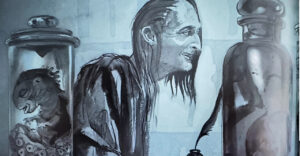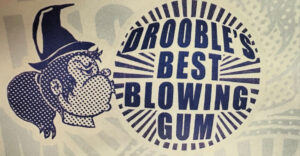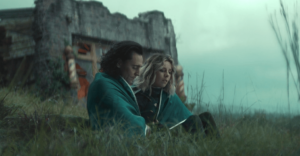Hamilton the movie, or the Hamilfilm as it’s more intimately known in nerd circles, is a visceral experience which needs no argument to justify it’s existence. It simply exists and we are all better for it.
I will never forget the pure elation I felt the moment I heard Hamilton was going to be converted into a widely released film.
But as the days crept by since that fateful announcement, I had a nagging sense of trepidation with each passing minute. Whether fairly, or unfairly, I slowly grew more worried that my dream of finally seeing the original cast in action would be met with abject failure.
The words from Dr. Ian Malcom in Jurassic Park kept replaying in my brain, “[y]our scientists were so preoccupied with whether or not they could that they didn’t stop to think if they should.” In other words, perhaps we should stop to consider the notion that Hamilton should only live on stage and not in our living rooms?
How could a Hamilton film live up to the rush of seeing it live in the theater with a thousand other people? Would/could the feeling from the performers and surrounding audience translate to a small screen? Could director Thomas Kail (for both the broadway musical and the film) catch that lightning-in-a-bottle effect?
After watching the Hamilfilm last night, I am delighted to report that not only SHOULD Hamilfilm exist, it passionately smashes every expectation I consciously and subconsciously set for it way back when it was announced.
Debating the larger questions of the musical such as: whether or not creator and star Lin-Manuel Miranda’s singing chops live up to the role, the brilliant casting choices, how the show is fairly liberal with the historical accuracy depicted within it’s runtime, or how it’s message may have been written for a different, and more idealistic, America back when it caught fire at the tale end of the hope-and-change President Obama era – does not interest me for this particular piece.
Reviewing the basic story/premise of the musical also does not seem applicable for this piece simply because the film is a literal copy of a live performed show in 2016. Should one want analyze what the strengths and weaknesses of the musical itself, there are about a kabillion reviews you can read anywhere. Better yet, you could even listen to our limited series podcast about the musical here.
No, this piece is about the actual film itself. What works, what doesn’t, and more importantly, what it’s entry adds to the Hamilton universe writ large.
To begin, there is an actual debate if Hamilfilm should be classified as a “movie”, or if it’s just a “taped performance”.
So, off the top, yes, it is absolutely a taped performance – if you’re expecting changing set pieces, scenery, or interaction with the surrounding environment like Burr possibly riding a horse when he cries “let’s ride!” half way through “Meet Me Inside”, then you will be disappointed.
In that sense, Hamilton is not a conventional “movie.”
Though, I believe it appropriate to refer to Hamilfilm as a movie because it’s recorded, full of rich characters who have discernible arcs, it’s adherent to it’s own story logic and delights all the senses a more traditional motion picture would affect. Hamilfilm just happens to accomplish all these feats in front a live audience who never interrupt the flow and feeling of the overall production.
That “feeling” is the biggest asset Hamilfilm owns in it’s diverse portfolio.
Perhaps a viewer has, in fact, seen a live show with the original cast at the Richard Rogers theater, or even the traveling show like this writer. Or, maybe the viewer has only listened to the cast album one can purchase on any major platform. Either way, each medium has it’s own personal affect – if one is cheering to the sheer momentum of the live show, or fruitlessly trying to stay in their lane on the highway while pushing through uncontrollable sobbing due to Phillipa Soo’s painfully delivered single line during “It’s Quiet Uptown” – they get the emotional effect Hamilton always imbues.
Hamilfilm not only captures this impassioned response, but it also drastically evolves that perception given the personal nature of Kail’s deft camera work. Again, one may have seen the original cast, or know every single sonic fiber of the soundtrack, but they have not experienced Hamilton to this degree.
“Experience” is the key here. Hamilton the movie provides a complete accounting of all the incredible talent at work for this kind of massive production, and there is no way to absorb it’s magnificence via soundtrack or sitting thirty rows back from the stage. The film plops us right into the inner workings of the show, and never lets up until the final bows.
Sitting in the most expensive seats one can purchase at the theater, or even listening with the best noise-canceling Beats headphones on the planet, could not allow the fan the same intimate perspective Hamilfilm affords.
In the film, we are treated to the necessary wide shots that capture the audience’s perspective during the show, but we are also allowed to experience the personal framework of actors in ways that would never be possible in any other form.
Director Thomas Kail knows how to block his actors in the frame to maximize the emotional response, but also to take advantage of this unique context and heightened visual experience with the incredibly talented cast.
Given the astonishing performances, one can see why many of the performers have gone on to win multiple Tony’s, Grammy’s, and burst into public superstardom. Part of me believes Kail, even back in 2016, knew the vast talent of his cast because his camera glides over, and through, the stage while granting the audience insanely intimate access to pristinely lit sets and quite literally comes within inches from his actor’s faces.
This is important because Hamilton, as a complete piece of art, is a wholly unique spectacle unto it’s own and it is A LOT to comprehend.
Between the rapid lyrics, expertly choreographed dance routines, varied lighting, and a relatively complex plot, the musical is, frankly, sensory overload at times.
If one does not know the lyrics going into the live show, they are going to have a hard time keeping up – let alone understanding it. But, the intimate camera work allows an entirely different understanding of the characters, their motivations, and their actively changing desires. In effect, the story slows itself down to allow for the gliding camera and provides the “way-in” for a more casual viewer.
Without the visual onslaught of sitting far away in a live show, the film effectively highlights small details like when it’s Maria Reynolds who actually hands Alexander the quill to write the Reynolds Pamphlet. Or we can see the reluctance on Miranda’s face when the camera drifts up to and past him as Alexander turns to the audience as he makes his decision to write his confession during “Hurricane.”
We even witness the mocking joy from one of the dancers as she snatches one of Hamilton’s letters from Burr’s hands during “Your Obedient Servant”, only to hand it back and laugh herself off the stage, further cementing Burr’s jealousy/hatred of Hamilton.
It’s these moments where Kail uses his blocking to his advantage and dive deep into the feeling he is trying to accomplish by singling in on the exact subject he needs without all the other goings-on of the show. It SHOWS the story without having to TELL the story.
There is no other moment in film that is more indicative of this expert manipulation than when Leslie Odom Jr’s Burr finally admits his only aspiration is to to be in the room where it happens.
Like the rest of the show, “The Room Where It Happens” is a visual and audio barrage on the senses but half way through the song there is a moment of solitude and embarrassment when Burr compares himself to Hamilton. “What is it like in his shoes? Hamilton doesn’t hesitate. He exhibits no restraint, he takes and he takes and he takes.” During the live show, or even on the soundtrack, you can hear the pain and the embarrassment.
But this moment in the film is what made me understand the reason why the film demands to exist.
Instead of focusing on how small Burr must feel in this scene and relying on a wide shot to evoke that visual language, Kail employs an extreme closeup on Odom’s face while not allowing a shred of negative space.
Sure, we see the pain, we see the embarrassment, but the silence and stillness, in addition to the closeup, makes us privy to an emotion we have never otherwise observed from Burr in any other iteration of Hamilton – resignation. Granted, this could be Odom’s artistic choice, but that’s the idea behind filming Hamilton in such an penetrating fashion.
This choice is indicative of the conflict within Burr, but the camera also provides an indication that the main antagonist of the story is going to be Burr going forward. As such, our focus becomes his focus.
Moreover, the zoomed visual cue is a profound glimpse into Burr’s pathos and his ethos. He’s resigned himself to the idea that Hamilton the man, and Burr’s goal of being in the room where it happens, are inexorably intertwined and are thereby at odds.
This moment and visual cue is a manifestation of a fundamental shift for the show evolving from being a cute rap musical that plays with history to a deeply personal tragedy of lost friendship and mutual hatred. It’s no coincidence that when the visual language of the film changes, so changes the emotional through-line.
There are other whimsical moments like this in Hamilfilm, like seeing Jonathan Groff’s distinct and wild rage as King George III while singing “AND, NO, DON’T CHANGE THE SUBJECT!”, during “You’ll Be Back”. In fact, his anger is evidenced by the spittle and saliva that is spouting out of his enraged mouth. It’s brilliant.
Or, perhaps you may have noticed Christopher Jackson holding back real tears at the end of his fervent rendition of “One Last Time”?
Or, like me, you became a puddle during what is maybe the coup de gras of the entire film – Phillipa Soo’s heart-breaking, scene-stealing, tear-duct-destroying performance of “Burn”? The anger, suffering, resentment, hatred, and agony of Alexander’s betrayal comes to life in ways that would NEVER be possible in a live show, or on the soundtrack. In fact, her movements become so rousing that the camera has a hard time keeping up with her which gives evidence to the fractured relationship she now shares with Alexander and us as the audience.
It’s this kind of momentum the live show uses to it’s noticeable pleasure, but that momentum is also heightened in the film by the camera work and cinematography from Declan Quinn, as well as fierce editing from Jonah Moran.
By focusing on specific characters to tell us their stories, and using many overhead shots to highlight the rotating floor, as well as side angles to block the characters properly, the film makes the story more accessible by keeping the frenetic pace but diverting it to where it needs it’s emphasis.
There’s a rising tension throughout the entire musical, but the film targets specific actions to give us a coherent narrative which does not bombard us into oblivion with it’s narrative force. “Non Stop” comes to mind because almost every character is not only present but singing with their perspective.
Angelica and Eliza both holding Alexander’s hands pleading with him to stop his maniacal pace of work, Washington calling out in the background to lead — which is a lot of that character work that would have been lost without the specific camerawork employed.
Much of this nuance is lost in a live show, and can’t be seen on the soundtrack, because of the sheer volume of lines, dances, and movement on the stage. He may have giggled at the prospect of becoming the Secretary of the Treasury with Washington, but we get a much better sense of Hamilton’s struggle to decide between his personal life and work because we are focused strictly on his choices as opposes to everything else.
There are countless other instances where the film excels in giving us an entirely new layer the show or soundtrack could never give us. Of course, as with any other film, there are some aspects of the project that hold it back from being perfect.
There are times when one would think the camera would be focused completely on the character, only to have it go to a wide shot and lose the personal effect. The final duel is a main culprit here. The first half of the show is often over exposed with light, and is sometimes disorienting in terms of the geography of the stage. The editing does become a tad overbearing during the larger numbers because they are A LOT of quick cuts due to the fact that each character needs their due time to enhance the story.
These set-backs, however, seem like small potatoes when in comparison to the complexity of production of this size and they do not detract from the overall experience of the show. If you the reader were to tell me, “hey, Blake, do that nitpicky crap on your own time”, I think it’d be a fair assessment.
In the end, though, Hamilfilm, far exceeds my expectations. Some people may complain that they didn’t ADD anything to the production, or there is no extra bits that differentiate it from the live show. They’d be right of course, but that does not mean it’s any better or worse than the live show. To be honest, I don’t need any additions to justify the existence of the film. I want it to be a good representation of the story I watched, and obsessed over while listening to it while blowing off all the work at my desk.
With the added depth of narrative force, intimate camera work, and the ability to expose the story to the masses, Hamilfilm is an absolute necessity for Hamilfans both casual and diehard, as well as those who have yet to see the story. It’s accessible, affords us more patience to see the the mythic story, and provides a layer in storytelling that is unmatched in any other form it is currently available. Suffice it to say, if you want your stubborn significant other to finally experience the wild craze of Hamilton, get yourself Disney+ and make them watch it.
They will love it. Guaranteed. Yes, because its great. Yes, because it’s an ear worm. And, yes, because it’s the most original gorgeously produced musical of he twenty-first century. But, really, because it passionately smashes every expectation set before it and more.
Mary & Blake Certified: A++













Spot on Blake! I truly love and appreciate this filming of Hamilton. It would be years before I’d get an opportunity to see this musical live. I have read Ron Chernow’s book so I knew the story.
And yes, I was able to get my stubborn significant other to sit down and watch it last night. He loved it. And he hates musicals.
Thank you Blake! Wholeheartedly agree with your insight in its entirety. I’m ecstatic that the Hamilfilm exists, and it brings our Hamilton experience to another level.
So, Blake,
A history major? Did you minor in cinematography? Have you considered a vocation as a television and film critic? From this review and from listening to Blake’s book club 2.0 I would suggest you would do well.
Terrifically comprehensive review. Thank you, Blake!!
I loved your review and I do agree with you. Great Job!